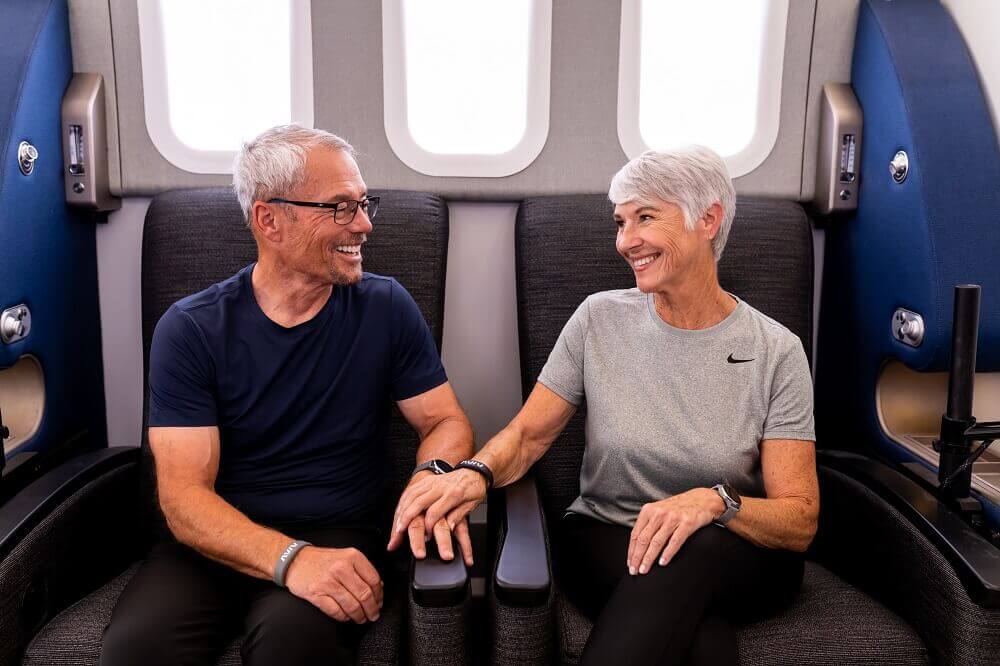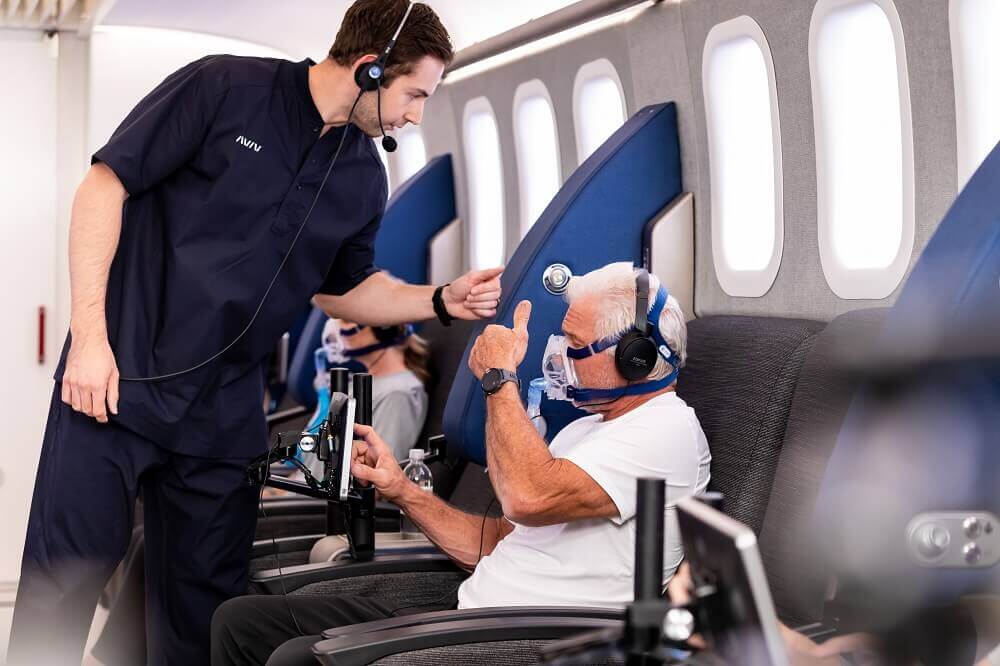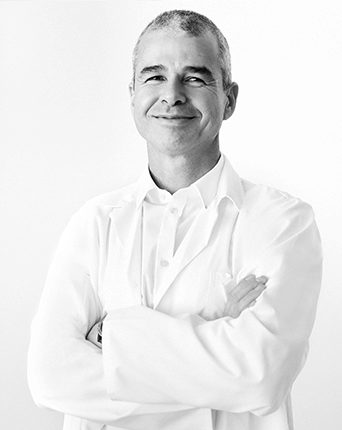
The Stroke Recovery Timeline: 5 Support Stages of Recovery


Last Update: 21 February 2024
The brain is a powerful yet delicate organ we often take for granted. Every thought, movement, and feeling we experience is thanks to the brain. So when these significant capabilities are suddenly stripped away by a stroke, the emotional and physical turmoil runs deep.
Each year, over 795,000 people in the U.S. have a stroke. And up to 50% of stroke survivors suffer motor dysfunction or brain impairment, which may include memory loss and challenges in focusing and processing information.
The stroke recovery timeline is unique for each individual. If these experiences emulate what you have been going through, the Aviv Clinics team is here to offer research-backed guidance on your road to recovery. Health is the most crucial element in your life. The time to commit to it is now.
Below you’ll find information on the impact a stroke has on your body and the five stages of stroke recovery. The intention? Ensuring you find a customized medical program to help you get back to optimal health.
What Happens to the Brain During a Stroke?

When a stroke occurs, blood cannot get to parts of the brain, meaning oxygen and nutrients cannot adequately nourish brain cells. This can happen in two ways:
- Arteries become blocked (an ischemic stroke)
- Arteries break/rupture (a hemorrhagic stroke)
In either case, a stroke damages areas of the brain. These impacts can manifest in cognitive, physical, and even emotional symptoms.
The Brain After a Stroke – The 5 Support Stages of Stroke Recovery
Studies illustrate the brain can reorganize and adapt in response to injury. But this process isn’t as clear-cut as you’d hope.
The reality is each person carries unique symptoms and medical histories. The timeline for stroke recovery is inherently diverse. So finding a clinic that can offer a customized post-stroke recovery plan is key. The right treatment plan will include one or a combination of these post-stroke rehab therapies.
The good news: The Aviv Medical Program provides a post-stroke recovery treatment program that can combine cognitive, physical training, dietary coaching, and Hyperbaric Oxygen Therapy sessions, even years after the incident. It is never too late to enhance your recovery.
Stroke Recovery Timeline
Though the journey is different for every survivor, each step along the stroke recovery stages timeline represents progress.
You or your loved one will progress through the stroke recovery timeline at an individual rate. While there is no fixed, standard timeline, the stages for improvement generally follow a sequence. Here is an overview of the stages of stroke recovery.
1. Acute Stroke Stage (0-72 Hours)
Immediately after a stroke, the patient receives urgent medical care focused on identifying the cause, stabilizing the patient, and preventing further damage. Medications and procedures to address the cause may be needed. If the stroke is severe, the patient may require emergency intervention.
At this stage, a rehabilitation plan is typically set in motion. This involves meeting with several different providers to make up a comprehensive care team, including neurologists, physical therapists, speech-language pathologists, and occupational therapists.
2. Subacute Stroke Stage (The First 3 Months)
During this stage, care is focused on regaining function and preventing complications. After the patient is discharged from the hospital, their stroke recovery plan at home or a rehabilitation center begins.
It’s during this period that patients often see the most improvement. Patients may receive physical, occupational, speech, and cognitive rehabilitation therapy and training. Depending on their needs, these therapies continue in outpatient centers or through home-based care. It’s typical for a stroke survivor to engage in multiple therapy programs one at a time or simultaneously as their support needs require.
The “risks of recurrent stroke are highest early after the first stroke.” Because of this, this stage also includes risk mitigation and regular monitoring for signs of a second stroke.
3. Early Stroke Recovery Stage (3-6 Months)
Rehabilitation efforts continue. During this period, patients can make significant progress with noticeable improvements. Some patients complete one or more programs, or may focus on home-based therapies rather than outpatient programs.
However, keeping up with a rehabilitation program is key in this stroke recovery stage and beyond due to the increased risk of another stroke. Ongoing care and support can help with the restoration of cognitive, emotional, physical, and behavioral functioning. Rehabilitation programs may be adapted as the patient relearns skills and their rehab needs change.
4. Intermediate Stroke Recovery Stage (6 Months to 1 Year)
Depending on the patient’s needs and challenges, some stroke survivors may complete therapy programs and experience a return to independence in one or more areas. Others will continue with rehabilitation programs on their road to recovery. In either case, stroke recovery is an ongoing process.
During this stage, progress may slow down, which can be frustrating for the survivor and their loved ones. However, improvement is still possible after these plateaus, particularly if rehabilitation efforts continue. Setting new goals and adding variety to a therapy program may help overcome these plateaus.
5. Ongoing Stroke Recovery Stage (1 Year and Beyond)
Post-stroke recovery can continue for years. It’s difficult to predict the success of therapies and how soon a patient can see improvements. Recovery takes time, and ongoing care is crucial for any stroke survivor.
However, major gains in function and independence can occur even years after a stroke. With ongoing therapy and lifestyle support, some individuals see improvements well beyond the one-year mark, especially with proper stroke-supportive therapies.
Ultimately, the rate of recovery depends on the severity of the stroke, the individual’s health, and the effectiveness of rehabilitation programs. Improvement may take longer for some patients, but remember: every positive milestone is one more step along the journey.

5 Support Stages of Stroke Recovery
1. Thinking, Memory, and Perception Training
Thinking, memory, and perception are vital in day-to-day communication and activities. Not to mention, they are what makes each of us creative and unique. So when up to half of stroke survivors experience cognitive impairments, addressing them is critical.
This is where a neuropsychologist can step in. Neuropsychologists assess the connection between someone’s brain and their potential to participate in daily activities.
Neuropsychologists typically begin with an assessment that measures memory, learning, and processing speed. They then use this data to craft a rehabilitation plan.
As one of the most vital stroke recovery stages, this process not only identifies areas for improvement but also paves the way for a personalized journey to cognitive recovery.
2. Communication and Language Training
Human connection plays a vital role in happiness and good health. It’s what helps us build empathy and relationships. So when this is taken away via aphasia—a disorder that affects your ability to understand or express speech—communicating and connecting with loved ones becomes challenging.
Stroke patients with aphasia are often referred to speech-language pathologists (SLPs). SLPs help individuals relearn communication and language techniques such as:
- Controlling mouth/throat muscles
- Engaging in cognitive language exercises
- Pronouncing specific words
- Formulating sentences or expressing information
Studies illustrate early speech intervention often leads to improved communication skills within a 12- and 26-week timeframe. These findings offer hope and reinforce the transformative impact of prompt intervention in the earlier stages of stroke recovery.
3. Exercise and Mobility Training
Those undergoing physical challenges may work with a physical therapist (PT) who helps them relearn and regain physical activities.
Exercise and mobility training with a PT may include:
- Movement exercises such as walking, sitting, standing, lying down, and switching from one type of movement to another
- Balance and breathing techniques
These help patients reacquire motor skills and return to their daily routines. Studies show consistent PT minimizes the risk of hospital readmission among post-stroke patients. As stroke survivors work with a PT to reacquire motor skills, they can reclaim their physical abilities and rebuild their sense of autonomy and independence.
4. Nutritional Training

Research notes that “of the factors that increase the risk of stroke, the worst is diet.” Guided support in this area enables stroke survivors to navigate the unique concerns they may experience. Nutritional training can be beneficial in post-stroke recovery for the following reasons:
- Some patients are unable to swallow well after a stroke. Their appetite might also diminish. These conditions can impact patients’ weight and nutritional intake.
- Patients may have physical issues (for example, being unable to control their arms and/or hands) that make eating and drinking difficult.
Dieticians can address those concerns and provide recommendations based on your needs to:
- Improve your health
- Minimize the risk of having another stroke
5. Hyperbaric Oxygen Therapy (HBOT)
Decades of research prove the benefits of using HBOT in post-stroke recovery. HBOT is a therapy process where patients are prescribed time in an oxygen chamber, breathing in 100% oxygen.
HBOT boosts oxygen in the body and promotes brain cell rehabilitation, which can result in:
- Regained speech
- Recovered ability to read and/or write
- Restored motor function
- Return to independence in performing daily activities
HBOT offers a profound pathway toward regaining important functions by supporting cellular rejuvenation. By tapping into the body’s natural healing potential, HBOT (as part of the Aviv Medical Program) harnesses the body’s capacity for recovery.
Post-Stroke Recovery: 4 Tips to Keep in Mind
To ensure the most successful post-stroke recovery, stay mindful of the following:
1. Consider that Recovery Is Different for Everyone
What recovery looks like and how long it takes is different for everyone due to reasons such as:
- Where in the brain the stroke happened
- How much of the brain was affected
- The survivor’s will and motivation to get better
- The level of caregiver support
- The quantity and quality of the recovery program
2. Repetitive Practice Is Key
“Carefully directed, well-focused, repetitive practice” is key to any neurorehabilitation program. It’s the same concept as if you were to learn a new skill like a musical instrument. Repetitive practice effectively retrains your brain.
3. Recurrent Stroke Prevention Should be Approached with Vigilance
Patients and healthcare professionals should be especially vigilant in preventing another stroke—roughly one in four stroke patients have had a stroke in the past.
Stroke prevention requires:
- Starting treatment right away
- Keeping the following conditions under control, as they can put you at higher risk for another stroke:
- High blood pressure
- Heart disease
- High cholesterol
- Diabetes
4. Measuring Progress Matters
The type of therapy and frequency are important factors to consider during recovery. Working with a medical staff that captures and tracks data is critical to your success.
For example, the Aviv Medical Program tracks analytics to provide a detailed report of your health and progress.
The information gathered from a variety of scientifically-advanced analytical tools (including an in-depth high resolution MRI of your brain stroke) allows our clinical team to make customized adjustments and give you precisely what you need to elevate the quality of your life.

Post-Stroke Recovery: 2 Key Signs of Healing
If you find your post-stroke recovery journey is slightly different, don’t stress about it. Everyone is different; thus, timelines and progress will vary. Regardless, there are two signs of recovery you can expect:
- There is improvement within three months and beyond: Although everyone recovers at a different pace, the first three months are generally when patients see and feel the most improvement. That’s why it’s more effective to begin a stroke recovery program quickly.
- Independence is improving: After a stroke, you may depend on others to help you carry out daily tasks such as getting dressed, bathing, or eating. With the right post-stroke treatment plan, you’ll start to rely less on others and perform those tasks independently again.
Stroke Recovery Story: Keren Trabelsi
A holistic treatment plan that addresses the mind and body is key to successful recovery. It offers a more effective and long-term recovery plan. Former Aviv Clinics patient Keren Trabelsi is a true testament to this.
Keren underwent an ischemic stroke, causing paralysis on the left side of her body. Also, cognitive issues made daily tasks difficult, which did not make her feel as capable as she had been before. Fortunately, Keren found the Aviv Medical Program. Aviv provided a personalized treatment plan that encompassed many of the phases discussed above. Thirteen months later, she can walk comfortably, type with her left hand again, and engage in cognitive activities (i.e., crossword puzzles, Sudoku, etc.).
“[The Aviv Medical Program is] like driving a Ferrari on the road to recovery versus driving like an old beaten-up car….”
Watch Keren’s post-stroke recovery story:
Stay educated on stroke by joining our on demand webinar.
Recovering After a Stroke: Is it ever too late?
Seek Stroke Treatment in Florida
Our team proudly assists a variety of clients, crafting an individualized plan for each patient.
If you or your loved one has undergone a stroke, contact Aviv Clinics. We’ll put you in touch with our medical team, who conducts the best stroke rehab center in Florida.





